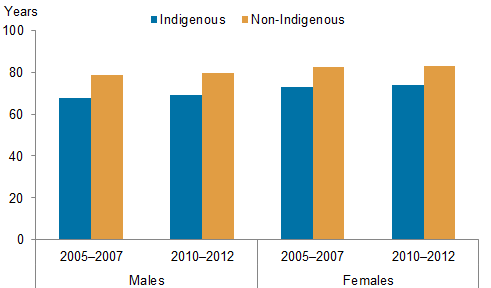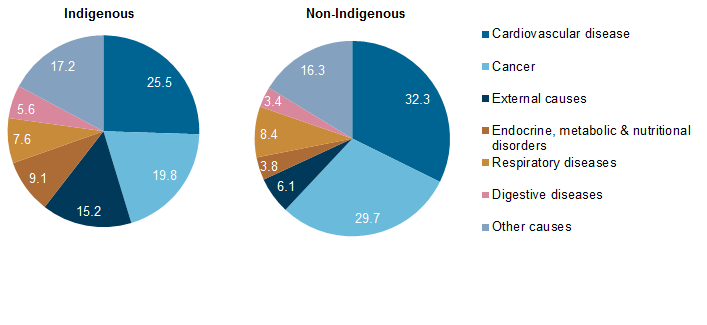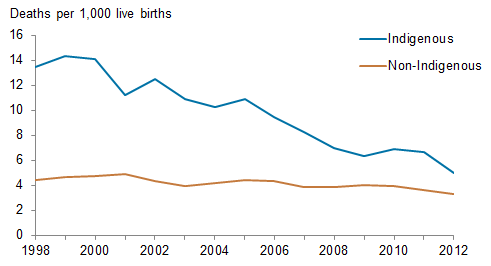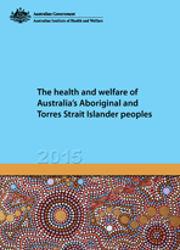Life expectancy and mortality key points
Life expectancy
In 2010–2012, estimated life expectancy at birth was:
- 69.1 years for Indigenous males—10.6 years lower than for non-Indigenous males (79.7 years)
- 73.7 years for Indigenous females—9.5 years lower than for non-Indigenous females (83.1 years).
Between 2005–2007 and 2010–2012, the life expectancy gap narrowed by 0.8 years for males and 0.1 years for females.
Life expectancy at birth, by sex and Indigenous status, 2005–2007 and 2010–2012

Mortality rates
In the 5 year period 2008–2012:
- two-thirds (65%) of deaths among Indigenous people occurred before the age of 65, compared with 19% of deaths among non-Indigenous people
- the mortality rate for Indigenous people was 1.6 times that of non-Indigenous people (age-standardised rates of 981 and 596 deaths per 100,000 population, respectively)
- the largest difference between Indigenous and non-Indigenous mortality rates was for people aged 35–44, with male and female Indigenous death rates 3.9 and 4.5 times the non-Indigenous rates, respectively.
Causes of death
The most common broad cause of death among Indigenous Australians was cardiovascular disease (25% of deaths), with Indigenous people dying from this condition at 1.5 times the rate of non-Indigenous people in 2008–2012. Almost one-quarter (24%) of the mortality gap between Indigenous and non-Indigenous people was due to this disease.
The next most common causes of death among Indigenous people in 2008–2012 were:
- cancer (20%), with lung cancer being the most common cause of such deaths (4.9% of all deaths)
- external causes of injury and poisoning (15%)
- endocrine, metabolic and nutritional disorders (including diabetes) (9.1%)
- respiratory diseases (7.6%)
- digestive diseases (5.6%).
Leading broad causes of death, by Indigenous status, 2008–2012 (per cent)

Mortality trends
Between 1998 and 2012, there was a significant decline (16%) in the age-standardised mortality rate for Indigenous Australians, with the mortality gap between Indigenous and non-Indigenous people narrowing significantly (by 17%). During this period, there was a significant decline in age-standardised mortality rates for Indigenous people for cardiovascular disease (40%) and respiratory diseases (26%), but an increase in rates for cancer (16%) and no significant change in rates for external causes.
Infant deaths represented 4.2% of deaths of Indigenous people compared with 0.8% of deaths of non-Indigenous people in 2008–2012. The mortality rate for Indigenous infants fell by 64% between 1998 and 2012 (from 13.5 to 5.0 deaths per 1,000 live births), while it fell by 25% for non-Indigenous infants (from 4.4 to 3.3 per 1,000 live births); over this period, the gap narrowed by 83%.
Infant mortality, by Indigenous status, 1998 to 2012




